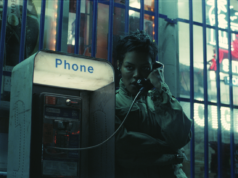Hello, everybody, and welcome to my blog of the 15th Van Cliburn International Piano Competition. I’m Kristian Lin, your friendly guide through the tall weeds of the piano repertoire. Since we had the last Cliburn, I’ve watched more than 1,000 movies, learned five languages, given myself a crash course in dessert wine, been treated for anxiety disorder (brought on during the last Cliburn), and become a contributor to Genius.com, where I am the leading Gershwin scholar, a fact that I’m inordinately proud of. Also, our nation replaced a decent, upstanding, conscientious president with a crooked idiot. See, I’m only friendly up to a point.
This year’s competition, with its changes in format, features a preliminary round where all 30 pianists give a 45-minute recital, after which they’re winnowed down to 20. So this is essentially like the Euro 2016 soccer tournament, where the 24 teams all played three group matches to eliminate only a third of the field. Yes, it wouldn’t be my classical music blog without a soccer reference, and with USA’s kids participating in the under-20 World Cup right now and the senior team trying to qualify for the big World Cup later on, it won’t be the last one.
All contestants are also playing a new work commissioned for the competition, Marc-André Hamelin’s Toccata on “L’homme armé,” a madcap technical showpiece that also has a lyrical side. Hamelin is a French-Canadian pianist who’s known for giving heaven-storming performances of neglected composers like Alkan, Godowsky, and Sorabji. I must like his new piece, because I heard it six times today without getting sick of it. I’ll hear it 24 more times in the next three days. I’m ready.
Our first contestant is Julia Kociuban, who reached the semifinals of the Tchaikovsky Competition two years ago and whose publicity picture makes her look like Haley Bennett from The Girl on the Train, not a bad person to resemble. Kociuban (whose last name is pronounced Ko-CHEW-ban) comes out in a shimmering blue dress and plays a not-all-that-convincing account of Beethoven’s 13th Piano Sonata “quasi una fantasia.” This Polish pianist has a big, luxurious sound, but her rendering of Prokofiev’s Seventh Piano Sonata feels similarly on the surface, and she plays the last movement too fast — one of my pet peeves about this piano masterpiece is that most people play that finale too fast. She’s best with Karol Szymanowski’s Étude in B-flat minor (Op. 4, No. 3), where she can sink into the piece’s opulent textures and sorrowful beauty. I don’t know my Szymanowski like I should; if she put out an album of his pieces, I’d listen.
She’s followed by Madoka Fukami of Japan, who begins with a highly creditable version of Alberto Ginastera’s First Piano Sonata. When she gets to Hamelin’s toccata, though, she’s nervous and tentative, needing the score in front of her. It seems to take something out of her. She plays “Ondine” from Ravel’s Gaspard de la Nuit, and the piece about the murderous mermaid doesn’t flow. (Dear God, did I just write that?) Her version of Chopin’s Polonaise-fantaisie in A-flat major dispels into the air without making much of an impact.
Faring better is Kim Su-yeon, who ill-advisedly starts off with Scriabin’s Second Piano Sonata. This early work has some flashes of the composer who’d become one of music history’s unique minds. That would happen as early as his Third Sonata, but Kim doesn’t make a solid case for the rest of the work, which feels bound to its 19th-century origins. She turns in an unspectacular version of Beethoven’s “Waldstein” Sonata, but she only loosens up in her last item, Rachmaninov’s arrangement of Fritz Kreisler’s Liebesfreud, getting into the swing of this Viennese waltz and giving it a real panache. I like hearing pianists play pieces of music for no reason other than their own enjoyment. Sometimes you see who the pianist truly is in a frilly, insubstantial encore like this one. I’d like to see more of this Kim.
Maybe the food I get at dinner break improves by state of mind, but it seems like the pianists in the evening session are better. I definitely like Leonardo Pierdomenico. The curly-haired Italian starts with Muzio Clementi’s Fifth Piano Sonata. Clementi was a wildly prolific contemporary of Mozart, whose pieces are now mostly given to children by piano teachers. Pierdomenico makes the sonata sound redolent of Mozart, Haydn, and Beethoven, but he and this piece are free of the baggage that comes with those other composers and the preconceived notions about how their music should be played. He makes this piece sound like it merits being played by grown-ups. He continues with the best version of the Hamelin toccata all day, taking an understated approach to the showpiece that brings its musical qualities to the fore rather than its technical difficulties. He concludes with Brahms’ Paganini Variations, which seems to be a favorite among Italian pianists. Maybe it’s because an Italian wrote the original theme, or maybe it plays to Italians’ strengths when it comes to conveying musical structure. Whatever it is, Pierdomenico plays it with verve and such clarity that I’m reminded of the straight lines and careful measurements of Italian architecture. He’s good enough to make me turn to my program and see what else he might have to play later in the competition.
The country of Romania has produced a few great pianists, notably the terribly short-lived Dinu Lipatti and previous Cliburn winner Radu Lupu. Hoping to follow in their footsteps is Alina Bercu, who went to school at Transylvania University. (Wonder if there was a hotel nearby?) She starts with a colorful, well-ordered performance of Bach’s Partita No. 4, and while she has a tough act to follow after Pierdomenico’s version of Hamelin’s toccata, she does a worthy job with it. She plays the second version of Prokofiev’s Seventh Piano Sonata for the day, but she does it with quite a bit more bite than Kociuban did. I don’t even mind so much that she plays that last movement faster than anybody I’ve ever heard.
Rounding out the evening is Russia’s Ilya Shmukler, who does fine with Haydn’s Sonata in F major (Hob. XVI:23) and finds a good fit with Alexander Siloti’s transcription of Bach’s Prelude in B minor, with its late-Romantic Russianized version of the great German. However, he saves his best for Ravel’s Gaspard de la Nuit. He could use a bit of a lighter touch in some places in “Ondine,” but the piece still sounds like it should, and he saves the subtlety for the funeral march of “Le gibet,” playing soft to emphasize the horror and grotesquerie of Ravel’s scene. He’s nimble enough when he has to be in “Scarbo,” but mostly he makes the impish demon sound like a 1,200-pound monster that’s waiting in your closet and thinking about eating you.
I’m feeling good right now, but tomorrow we’re hearing nine pianists instead of six. It’s nine more on Saturday, too. Pray for me.












